#difference between hijab and niqab
Explore tagged Tumblr posts
Text
Why Do Muslim Women Wear Hijabs? Modesty & Faith Explained
The hijab, a headscarf commonly worn by Muslim women, has become a topic of much curiosity and sometimes, misunderstanding. But what exactly is the hijab, and what does it represent for the women who choose to wear it? This article delves into the world of the hijab, exploring its significance, variations, and the personal journeys of Muslim women who wear it. Hijab: More Than Just a…
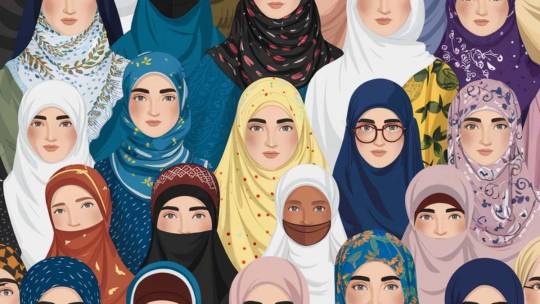
View On WordPress
#can muslim women show their face#difference between hijab and niqab#different styles of hijab around the world#digital islamic guide#digitalislamic#digitalislamicguide#hijab islam#hijab meaning#is it okay to ask a muslim woman about her hijab#is wearing a hijab mandatory in islam#Islam#meaning of hijab in islam#muslim headscarf#muslim women who don&039;t wear hijab#Quran#reasons why muslim women wear hijab#types of muslim head coverings#what happens when a muslim woman takes off her hijab#what is considered modest dress for muslim women#why do muslim women wear hijab
1 note
·
View note
Text
If I have to hear another nun + hijab comparison I’m stealing something outta yalls house
#personal#mfers don’t even know that nuns and sisters are different like shuttt uppppp#don’t even know the difference between hijab and niqab and burka sit the hell down
2 notes
·
View notes
Text
Recently i made the decision to start wearing the niqab a choice deeply rooted in my faith, my sense of modesty, and my commitment to covering myself in a way that I believe aligns my religion. While there are differing views on whether niqab is obligatory or recommended, I chose to wear it wanting to be on the safer side. I knew from the very beginning that this journey would not be easy and I had mentally prepared myself for the challenges that would come from society, from strangers, and from people who might misunderstand my choice. But what I was not prepared for was the reaction from my own family. I had imagined that stepping outside in a niqab would be the hardest part dealing with stares, whispers, or assumptions that I am overly conservative or isolated from the world. But surprisingly what hurt me the most was not the reaction of the outside world but rather the reaction of those closest to me. The moment that really struck me was during a simple dinner at home, where I was sitting with my family and an uncle from my maternal side. Since they are my mahrams i wasn’t wearing a hijab at that moment . His comments were very hurting and i realised that its not always the strangers but it is those within our own circles who question and challenge our choices the most.
His words and attitude made me realize how deeply ingrained certain perceptions are even among Muslims. Perhaps he sees the niqab as unnecessary, extreme, or a sign of restriction rather than empowerment. Maybe he believes it creates distance between people, making interactions more difficult. But for me wearing the niqab is not about separating myself from the world it is about strengthening my relationship with Allah about feeling secure in my modesty and about finding peace in my identity as a Muslim woman.
It has taught me that the real test of faith is not just in wearing the niqab but in enduring the reactions that come with it. I’ve realized that conviction is not just about believing in something it is about standing by it even when it is difficult, even when those closest to you do not understand it.
I know that this journey is still new for me and there will be many more challenges ahead. But I also know that sincerity in faith comes with trials. If Allah has guided me to this path then I trust that He will also give me the strength to walk it.
To any woman out there who is struggling with a similar choice know that you are not alone. The world may not always understand you, and even your own family may not always support you, but if your intention is sincere and your heart is firm that is what truly matters. Keep going. Your journey is between you and Allah and that is the only validation you need.
36 notes
·
View notes
Text
In mid-October, the authorities in Russia’s Vladimir region issued a ban against clothing that “demonstrates a student’s religious affiliation,” including hijabs and niqabs, in schools. Within days, religious and political figures in Chechnya and other regions in the North Caucasus began protesting the policy, demanding it be revoked. Russian propagandists and pro-war bloggers, meanwhile, sided with the Vladimir authorities and defended the ban. Meduza shares a timeline of how the controversy has unfolded.
October 22, 2024
↓
The Vladimir region’s Education and Youth Policy Ministry issues a decree stating that “the wearing of clothing and elements demonstrating a student’s religious affiliation (including hijabs, niqabs, etc.) is not permitted.”
October 25–26
↓
The decree officially takes effect on October 25. The media gets wind of the new policy on October 26. That same day, the regional ministry writes on social media that, according to the Russian Constitution, Russia is a secular country in which “the church is separate from the state, including in the realm of secular education,” and adds that its new ban “ensures religious neutrality” in schools.
October 28
↓
The Coordination Center of Muslims of the North Caucasus issues a statement saying that hijabs are “not just religious clothing or religious articles but daily traditional clothing for Muslim women, a symbol of their honor and dignity.” It accuses authorities in the Vladimir region of launching a “destructive” initiative aimed at “inciting interethnic and interreligious hatred in Russia.”
Later on October 28
↓
Salakh Mezhiev, Chechnya's mufti and an advisor to Governor Ramzan Kadyrov, says that the Vladimir region’s ban violates the Russian Constitution. “We’re also bewildered by the fact that this document specifically highlights a ban solely on Islamic religious attire,” Mezhiev states.
October 29
↓
Russian State Duma Deputy Adam Delimkhanov reports that he and other Chechen lawmakers met on Kadyrov’s behalf with Igor Igoshin, a State Duma deputy from the Vladimir region, to discuss the ban. “The outcome of the meeting was a decision to work together to overturn the provocative decree,” Delimkhanov writes on Telegram. He calls the regional officials responsible for the ban “irresponsible people” who are “undermining society’s stability”:
I also want to clarify the difference between a niqab and a hijab one more time. A niqab is a piece of women’s clothing that covers the face, while a hijab does not cover the face. We ourselves don’t endorse the wearing of niqabs, but wearing a hijab is a religious duty of Muslim women. If someone in the Vladimir region doesn’t understand these simple truths, we’ll explain in clear terms what religious traditions are and why they can’t just be unceremoniously banned!
October 29-30
↓
Russian pro-war bloggers sharply criticize the Chechen authorities for their efforts to overturn the Vladimir region’s religious clothing ban. Yury Kotenok, a so-called “war correspondent” who writes about the invasion of Ukraine, calls Adam Delimkhanov’s statement “an open threat” and urges officials in Vladimir “not to cave.” Oleg Tsaryov, a former member of Ukraine’s Verkhovna Rada and a prominent figure in the Donbas separatist movement, says that “Chechnya is part of Russia, but not the other way around.” The pro-war Telegram channel “Two Majors” tells Delimkhanov “not to meddle in other’s affairs” and to avoid using phrases like “We’ll explain in clear terms” when speaking to officials. Pro-war blogger Roman Saponkov suggests that Chechen officials’ statements about the school ban demonstrate the “weakening of the federal center during the special military operation.” The pro-war Telegram channel Alex Parker Returns writes that “a third Chechen War is inevitable.”
October 30
↓
Biysultan Khamzaev, a State Duma deputy from Dagestan, refers to officials from the Vladimir region as “idiots” who “decided to oppose a big, important, and necessary policy” in place in Russia. Speaking at a State Duma round table, Khamzaev says that “in Dagestan, we have common sense — we don’t ban crosses, Passover, or anything else.” Addressing the authorities in the Vladimir region, he adds: “What, are you more important than the Russian Constitution?”
Later on October 30
↓
Evgeny Popov, a State Duma deputy from Moscow and the host of the talk show 60 Minutes, says that Biysultan Khamzaev is a “hype-chaser” who “works to get clicks and views for his posts and mentions on social media.” He adds: “Unfortunately, this casts a shadow on the parliament, the government, and so on.” Later that evening, Popov writes on Telegram: “Khamzaev called. He threatened me. It happens.”
Also on October 30
↓
The Vladimir regional government’s press service tells Kommersant that the authorities based their ban “on the experience of other regions, as well as on the position of the Supreme Court,” which upheld the legality of such bans in schools in 2015. A high-ranking source close to the regional government tells the newspaper that the authorities are “mildly surprised” by the controversy. “If anybody feels their rights have been violated, they’re welcome to go to court. After all, we live in a country of laws,” the source says. The same source notes that the region’s “small and close-knit” Muslim community had not expressed any disappointment with the decree, but that “for some reason, people from outside [of the Vladimir region] are trying to discuss our internal matters.” The source adds that the authorities have no intention of overturning the policy: “It would be strange to reverse this decision based on someone’s public statements.”
October 31
↓
Kremlin spokesman Dmitry Peskov says in a press briefing: “Look, every region exercises its own authority. We’re not participating in this discussion.”
2 notes
·
View notes
Text
The idea that Muslim women are universally oppressed is a stereotype that doesn't reflect the diversity of Muslim women's experiences, lives, and choices worldwide. Here are some points to challenge this misconception:
1. Cultural Diversity within Islam
Islam is practiced across many countries and cultures, from the Middle East and North Africa to Southeast Asia, Europe, and North America. What it means to be a Muslim woman varies significantly across these regions.
Many aspects of Muslim women’s lives are influenced more by local cultural traditions than by Islamic doctrine. These traditions vary widely and often shape dress, social roles, and family expectations differently.
2. Choice and Agency
Many Muslim women choose to wear the hijab, abaya, or niqab as an expression of their faith, identity, or cultural pride. For them, these garments are symbols of empowerment, not oppression.
Many Muslim women feel that Islam, in fact, grants them rights and autonomy—such as rights to property, inheritance, work, and education. These rights were outlined in Islamic texts over 1,400 years ago, long before similar rights were recognized in the Western world.
3. Islamic Teachings on Women’s Rights
Islam grants women the right to education, economic independence, and participation in the public sphere. The Prophet Muhammad’s first wife, Khadijah, was a successful businesswoman, which exemplifies the early encouragement of women’s economic roles.
Inheritance laws in Islam, although complex, were among the first religious guidelines to recognize women as legal inheritors in a time when women were rarely seen as equal participants in family wealth.
4. Active Roles in Society and Leadership
Muslim women today actively participate in all fields: government, sciences, arts, and activism. There are Muslim women leaders, scientists, writers, and politicians across the world who challenge stereotypes through their achievements and leadership.
Examples include Nobel laureates like Malala Yousafzai, politicians like Ilhan Omar, and countless women breaking barriers in their communities.
5. Distinguishing Between Religion and Politics
In some countries, political and legal restrictions placed on women are wrongly associated with Islam, even though they are more accurately reflections of the ruling regimes or legal codes not based in Islamic principles.
For instance, while some countries enforce specific dress codes or restrictions, others with significant Muslim populations, like Indonesia, Malaysia, and Turkey, have varying levels of freedom and women’s participation in public life.
6. Women's Voices in Islamic Scholarship
More Muslim women are participating in Islamic scholarship, interpreting religious texts and challenging patriarchal interpretations that have historically sidelined women. Scholars like Amina Wadud advocate for gender justice and work within the framework of Islamic thought to promote egalitarian principles.
7. Growing Awareness and Activism
Many Muslim women are using social media and global platforms to voice their experiences and fight against stereotypes. They are leading conversations about feminism, mental health, and women’s rights from within their cultural and religious contexts.
In summary, Muslim women’s experiences are diverse and cannot be encapsulated in a single narrative of oppression. It is essential to recognize the individuality and agency of Muslim women and acknowledge that, like all women, they are not a monolithic group.

2 notes
·
View notes
Note
Salam alaikum wa rahmatullah,
I hope you're doing well. I need some advice, in shaa Allah pls
Howw can I explain in a simple and respectful way to the average Muslim — especially my relatives who are not educated in Islamic knowledge — why I wear the niqab?
I myself don't have deep knowledge, I haven’t memorized hadiths or ayat with tafsir about hijab or niqab, so when they ask me, I don’t always know what to say. They’re not used to seeing someone wearing niqab, and sometimes they question it or don’t understand.
One thing that comes to my heart to say is: “If our mother Aisha (may Allah be pleased with her) was alive today, she would be happy with my choice.” But I wish I had more simple and clear ways to explain it without going too deep into fiqh or quoting things I don’t fully know.
Also, how can I deal with people who confuse me by saying things like: “But how do you know that hadith is authentic?” thjis makes me feel uncertain and discouraged.
ــــــــــــــــــــــــــــــــــــ
وعليكم السلام ورحمة الله وبركاته
Sis, I won't sugar coat it at all: You really need to understand the reasoning for why you believe/do certain things. I'm not sure it you are the same person who asked previous questions similar to this regarding other matters (+ I'm really sorry for my delay in responding to one of your questions, but I'm still reviewing what I wrote with a Shaykh and he is not active much due to his illness which is what is delaying it.) This issue is really dangerous ukhtī, and again I really wish to speak to you in private إن شاء الله so that I could properly help, if Allāh wills.
Sometimes, we find out the truth by imitating others. Many people find this manhaj because they saw a Shaykh they liked and imitated their way or perhaps they met people on social media and ended up following their path. And this is okay, we can't change the past or how we reached a certain place, but we need to retrace the steps that led us to where we are and the things we believe and do.
Taqlīd (blind-following) is the very reason many entire groups have went astray. How can we, who claim to be people of truth, do the same thing, while we have the means to reach the truth, and we have every piece of evidence?
Ignore what you will answer to the people when they ask you, what will you answer to Allāh عز وجل when He asks you about your time and what you have done with it? Seeking the knowledge of your Dīn in the matters that are obligatory upon you is obligatory!
During tough times, the ignorant become weak and those of knowledge stay steadfast. There is a stark difference between those who join the path following their desires, even if their desires happened to be the truth, and those who reached the truth through knowledge and foundation. How do you think our righteous imprisoned scholars and those who followed the truth based on proofs and strong conviction, may Allāh keep them steadfast, stay sane and firm even through inhumane conditions and torture, while those who merely followed their desires end up selling their ‘aqīdah, some of them even ending up agents to the kuffār?!
May Allāh keep you steadfast upon wearing the niqāb, and may He increase you in modesty and covering. You are carrying the legacy of the righteous women of the Salaf over your head and tying it over your face, sis, so do not let it down.
I advise you to read the following, as a starting point, though I do not endorse the author:
This may also be beneficial for you: https://ahmadjibril.org/clarifying-proofs-used-against-the-obligation-of-niqab-%d8%ad%d8%af%d9%8a%d8%ab-%d8%a7%d9%84%d8%ae%d8%ab%d8%b9%d9%85%d9%8a%d8%a9/
I advise you to continue to search and study the matter in-depth so that something like this is extremely clear to you. Don't be scared to converse with people about this matter and listen to their critique and even their doubts, even if you don't have a response to it in the time being. Write them down and search about them and study the matter. In shā' Allāh, over time, by this, you will not only be able to respond to others in a superficial manner but you will also have the ability to search in fiqh matters and properly conduct research in matters of your Dīn.
Regarding the ahādīth, I believe the solution is—and Allāh knows best—studying the science of hadīth itself, and perhaps specifically the science of mustalah (terminology) of hadīth. It is an extremely vast knowledge that is not gained in a year or two, and it proves to one the extent and depth that our a'immah went to to prove the authentic from the inauthentic. It is enough to begin studying it to know how much the scholars have put into analyzing every single hadīth and the tools/criteria they use to do so.
May Allāh bless you and protect you, sis.
1 note
·
View note
Text
**The Qur’an and Sunnah on Those Who Reject or Neglect Obligatory Acts of Worship and Appearances in Islam**
There are people today who claim that Islamic practices, such as prayer, hijab, and the beard, are "private" matters between the individual and Allah. They argue that outward appearances do not matter, that hadith are "man-made," and that religion should be modernized. However, such statements **contradict** the teachings of the Qur'an, Sunnah, and the understanding of the Salaf.
---
**1. Islam is Not Just a Private Matter**
**Public Acts of Worship Are Part of Islam**
Allah commands **both private and public acts of worship** in the Qur'an:
> **"And establish prayer and give zakah and bow with those who bow [in worship]."**
> _(Surah Al-Baqarah 2:43)_
This verse shows that **prayer is not just a private act**—it must be established in congregation when possible. Similarly, hijab, the beard, and other outward Islamic practices are **manifestations of inner faith**.
**The Prophet ﷺ and His Companions Practiced Islam Openly**
When the Prophet ﷺ and his Companions were in Makkah, they were persecuted **because they openly practiced Islam**. If Islam were purely private, the Quraysh would not have opposed them. However, the **Sunnah** shows that Islam must be lived and practiced in both private and public life.
---
**2. Hijab Is an Obligation, Not a Choice**
**Hijab and Niqab Are Commanded in the Qur'an**
Allah **explicitly commands** women to wear the hijab in the Qur'an:
> **"O Prophet, tell your wives and your daughters and the women of the believers to bring down over themselves [part] of their outer garments. That is more suitable that they will be known and not be abused. And ever is Allah Forgiving and Merciful."**
> _(Surah Al-Ahzab 33:59)_
This verse **proves that hijab is not a personal choice but a religious obligation**.
**The Niqab (Face Veil) in the Sunnah**
The wives of the Prophet ﷺ and the righteous women of the Sahabah **covered their faces**. Some scholars consider it obligatory, while others say it is highly recommended.
Ibn Kathir رحمه الله explains this verse by quoting Ibn Abbas رضي الله عنه:
**"Allah commanded the believing women to cover their bodies, including their faces, so that they may be recognized as chaste women and not harassed."**
Thus, the claim that **"hijab is not necessary"** goes against **clear** Qur'anic evidence.
---
**3. The Beard Is a Command from the Prophet ﷺ**
**Keeping a Beard Is Not Just a Sunnah but a Command**
The Prophet ﷺ **ordered** Muslim men to grow the beard:
> **"Trim the mustache and let the beard grow; be different from the Mushrikeen (polytheists)."**
> _(Sahih al-Bukhari 5892, Sahih Muslim 259)_
The scholars of the Salaf, including **Imam Ahmad, Ibn Taymiyyah, and Ibn Uthaymeen**, all held that shaving the beard **is not permissible** because it contradicts the command of the Prophet ﷺ.
Some claim, **"Just keep it short and neat, like a goatee,"** but this contradicts the Prophet’s words, **"let the beard grow."**
Imam Ibn Hazm رحمه الله said:
**"It is haram to shave the beard because it is changing the creation of Allah."**
Thus, saying that **"Allah only looks at the heart"** and that the beard is not important **contradicts** the Sunnah.
---
**4. Rejecting Hadith Is a Sign of Misguidance**
**Hadith Are Not “Man-Made” But Divine Revelation**
Allah says in the Qur'an:
> **"And he (the Prophet) does not speak from his own desire. It is nothing but revelation sent down (to him)."**
> _(Surah An-Najm 53:3-4)_
This means that the **words and actions of the Prophet ﷺ** are not **his personal opinions**—they are **divinely inspired**.
The Prophet ﷺ also said:
> **"I have been given the Qur'an and something like it along with it (the Sunnah)."**
> _(Sunan Abu Dawood 4604, Sahih)_
The **Companions and the Salaf strictly followed the Hadith** because they knew that rejecting the Hadith means rejecting the guidance of the Prophet ﷺ.
**Warning Against Those Who Reject Hadith**
The Prophet ﷺ warned about those who say, **"We only follow the Qur'an."** He said:
> **"Soon, there will be a man reclining on his couch who will say: 'Keep to the Qur'an only; whatever you find in it to be permissible, treat as permissible, and whatever you find in it to be forbidden, treat as forbidden.' But know that what the Messenger of Allah has forbidden is like what Allah has forbidden."**
> _(Sunan Abu Dawood 4604, Sahih)_
Ibn Taymiyyah رحمه الله said:
**"Whoever rejects the Sunnah and claims that only the Qur'an is needed is a deviant and is on the path of destruction."**
Thus, saying that **"Hadith are only historical knowledge and do not need to be followed"** is **a sign of deviation**.
---
**5. Islam Is Not About Modernizing or Watering Down Its Teachings**
**Allah’s Religion Is Perfect and Unchanging**
Some people argue that **"Islam should change with time"** and that some hadith were only for the Prophet’s time. However, Allah says:
> **"This day I have perfected for you your religion and completed My favor upon you and have approved for you Islam as your religion."**
> _(Surah Al-Ma'idah 5:3)_
Islam **is perfect and does not need to change**. The Prophet’s ﷺ teachings apply to **every time and place**.
Ibn Qayyim رحمه الله said:
**"Anyone who believes that the Shari’ah should be adjusted for modern times is saying that Allah’s religion is incomplete. Such a person is upon misguidance."**
Thus, saying that **Islam needs to be modernized** contradicts **clear** Qur’anic and Sunnah evidence.
---
**Conclusion: What Should Our Attitude Be?**
The statements:
❌ "Islam is only between me and Allah; no need to show it."
❌ "Hijab and beard are not necessary."
❌ "Hadith are man-made and not needed today."
❌ "Islam should change with time."
These statements **oppose** the Qur’an, Sunnah, and the understanding of the Salaf.
Instead, a true believer should say:
✅ "Islam is a complete way of life."
✅ "I follow the Qur’an and Sunnah as understood by the Salaf."
✅ "I do not compromise on hijab, beard, or other clear commands."
✅ "I accept and follow the Hadith as divine guidance."
The Prophet ﷺ said:
> **"Whoever turns away from my Sunnah is not from me."**
> _(Sahih al-Bukhari 5063, Sahih Muslim 1401)_
We ask Allah to guide us to the straight path and protect us from the fitnah of those who **water down** or **reject** Islam.
Ameen.
1 note
·
View note
Note
Thanks for explaining about the hijab and the requirement for modesty.
Our former prime minister was very rude about the niqab, referring them to post boxes. There was an understandable backlash against his comments.
I have western values, so my instinct is to support women's empowerment and freedom of choice. But I can see how this clashes with the concept of modesty.
I'm all for finding common ground between western values and Islam.
I worked as a gardener for a spell and I love the Islamic tradition of using water in the garden to create peaceful rippling sounds and movement. I'd love to visit Grenada.
I visited an Ismaili Centre a while back on an architecture tour and it has a lovely garden on the roof with 4 quarters. It's in the middle of a busy city but in the garden, you'd never know.
Further afield, I visited a hilltop village in india called Mandu which has a rich Islamic past. You can hire a bicycle and explore with hardly any tourists because it's so hard to get to from a train station. In another fantasy, I could be your tour guide and show you around. That would be amazing, serving your every need along the way, finding a quiet spot to have a picnic, obeying your requests, tipping the workers/key holders to let us in to see hidden gems.
Actually, the concept of modesty doesn't clash with women's freedom of choice. Because even if it's obligated, it's the woman's choice to get in or not get in hijab. For example, me. I'm not wearing hijab yet.
This doesn't only exist for women, but men as well. We just cover our body to drive less attention, lower the risk of unwanted gaze of people.
A lot of muslims can represent islam very badly, so let me shortly put it like this: Islam is never about women being opressed, never about women being obedient. In marriage, obedience, loyalty and respect is a must for both parts (wife and husband)
Also that seems lovelyyy
There are many islamic architectures in different countries I didn't see yet. But I would like to suggest to see the mosques in Turkey. Hagia Sophia Mosque (it's called Ayasofya here), Eyub Sultan Mosque, Sultan Ahmet Mosque, Grand mosque, Selimiye Mosque and etc.
Hagia Sophia Mosque used to be a cathedral, then it got turned into a mosque. The paintings on the marbles are so beautiful and detailed. Since it used to be a cathedral, there are paintings of biblically accurate angels, Prophet Jesus (yes, Jesus is also a prophet in islam)
There's also an icon of Mother Mary in front of the top window
I prayed there once, the experience wasn't so different than the other mosques but the fact that this mosque used to be a cathedral and is a museum material made this a more interesting experience
#anon asks#send anons#anon ask#anons welcome#asks#send me asks#ask me stuff#send asks#ask#asks are open#benari asks#benari answers
1 note
·
View note
Text
Small ways to be inclusive
We all sometimes wonder how we can be more inclusive in our lives, what we can say or do in order to be more accepting towards cultures that are not our own. And it would be remiss of us to have an account talking about cultural and social impacts on relationships without giving you some easy ways to be more inclusive.
As the following list may show you, there are many easy ways to be inclusive and accepting of others with differing cultural and social views.
make sure there is food everyone can eat, at whatever function you are at. Have halaal food, vegetarian food, some vegan food, and set it off to the sign with something to show what that food is and who it is for. Even if it is just a little bit, it's better than some people not being able to eat at all, or needing to pick their way through the food without being sure what is safe for them to eat.
if you see someone standing to the side in a meeting/gathering/social event, don't just assume that they are anti-social. Talk to them. Ask them why they are standing to the side - are they just not feeling up to talking, or have they been made to feel uncomfortable by the people around them? If the latter, try and do something about it, even if that is only to stand there and talk to this person for a few minutes.
learn the differences between commonly seen cultural clothing! Niqabs and Hijabs are not the same thing, and it can be quite offensive to assume that a woman with her head covered is always wearing a hijab! A kimono and a yukata are different! If you want to compliment a culture's clothing, learn the correct terminology, or else just say something neutral such as "I like your outfit."
learn some common greetings and sayings! Not everyone has the same greeting, and not everyone has the same phrases. Learning what some of the most commonly found cultural greetings and phrases are can help clear up misunderstandings, and can also help you fully appreciate what the person is saying.
DO NOT ASSUME. If you don't know something, ASK. Do not assume you know something about a culture. Do not assume that you know what someone is thinking/doing/saying. Ask about whatever you are curious about! Ask about whatever you don't know. This is (arguably) the most important point on this list.
#i will make more of these#but here you go#small ways to be inclusive#relationships#culture#family#tumblr stuff#cultural differences#food
1 note
·
View note
Text

Islamic clothing for women is designed to promote modesty while allowing for personal style.
Islamic clothing for women often emphasizes modesty while offering a variety of styles depending on cultural and personal preferences. Below is an overview of different types of clothing commonly worn by Muslim women, highlighting modesty and style:
1. Hijab
The hijab refers to a headscarf that covers the hair, neck, and sometimes the shoulders, leaving the face exposed. It is one of the most recognizable symbols of modest Islamic clothing. Hijabs come in various styles, including the square, rectangular, or even turban-style, and are often made from different materials like cotton, chiffon, and silk.
2. Abaya
A loose, flowing robe worn over regular clothing. It’s often black but can come in a variety of colors and styles. The abaya is worn for modesty and can be designed with elegant embellishments or embroidery. It is common in the Middle East but is worn by Muslim women around the world.
3. Jilbab
Similar to the abaya, the jilbab is a long, loose-fitting outer garment. It is more common in regions like Southeast Asia, where it may have a more tailored fit and come in various styles and colors. Some jilbabs have hoods, zippers, or buttons for added functionality.
4. Maxi Dress
A long, flowing dress that reaches the ankles, providing full coverage of the body. Maxi dresses are often worn with a hijab and can come in a wide range of designs, from simple to ornate, depending on occasion and personal style.
5. Skirts and Pants
Modesty is also often achieved through wearing skirts or pants that provide full coverage of the body. Long skirts or loose-fitting trousers are common choices. Muslim women may pair these with tunics, long shirts, or dresses to complete their modest outfits.
6. Niqab
A niqab is a face veil that covers the face, leaving the eyes exposed. This garment is worn in conjunction with a hijab or another headscarf for women who choose to follow a higher level of modesty.
Occasions: Islamic clothing can range from everyday casual wear to formal, event-specific outfits, such as those worn for weddings, Eid celebrations, and other religious or cultural gatherings.
These garments serve not only as a means of modesty but also reflect individual style and cultural identity. The emphasis on modesty varies between individuals, so the level of coverage and style can differ based on personal beliefs and preferences.
4 notes
·
View notes
Text
How to interact with a Niqabi: A Guide of sorts

[Img id: three photos of the-eldritch-it-gay, a medium skinned niqabi wearing a black niqab. In the first they are wearing rose-gold headphones and blue exam gloves. The 2nd photo is a close up selfie of them wearing a black jilbab and niqab in front of a multi-colored poster. In the 3rd image, they are taking a selfie in a mirror, wearing the same headphones, niqab and jilbab as the first image, but with a leather jacket over the jilbab.]
This is in response to this post of mine you might have see. A common question I’ve gotten is more or less “how should I interact with a niqabi?” So I thought I might answer that and some other questions or things brought up. Please keep in mind I am not the Authority on Muslims, Islam and Muslims are not monoliths, this is advice based on my experience as a niqabi.
A note before we begin: I use they/them/theirs pronouns, please respect that.
Q: How different is a niqabi from any other person?
A: Not very! The only difference between me and a Muslimah who wears a loose hijab and jeans is our choice of clothing. My wearing a jilbab and niqab doesn’t mean I’m more conservative or more Muslim than other Muslims, it’s simply how I choose to dress. The biggest difference between me and someone who isn’t Muslim is that I dress differently and believe in Allah(SWT). We probably have more in common than you think. I’m a university student, I go to classes and live in a dorm like everyone else. I play video games, I post on social media, I watch movies and TV shows, I play D&D, I make jokes, I’m socially awkward and anxious, I watch funny tiktoks, I play minecraft.
Q: Is it okay to talk to niqabis?
A: Absolutely. We haven’t taken some vow of silence or isolation, I’m not certain where that idea comes from. We’re just Muslims who cover our face and dress modestly.
Q: Are there any rules about interacting with niqabis?
A: The only thing I can possibly think of is about shaking hands/touching. In general, veiled Muslim women aren’t supposed to touch/shake hands with men. This varies from Muslim to Muslim, but your safest bet is to avoid shaking hands or touching unless they initiate it. We’re also still in the midst of a pandemic, so I don’t think anyone is big on shaking hands right now, Muslim or not.
Instead of shaking hands, if you really want you can place your hand on your chest and just kinda nod.
Q: Wait you can’t shake hands with men?
A: I’m sure some of you might think that is a “backwards” or “archaic” or “fucked up” rule/practice. It isn’t. It’s just a cultural difference, please do not back into Islamaphobia over a minor cultural difference. I promise you I would not feel “liberated” if I shook a man’s hand. And as I mentioned, this rule is not one all Muslims follow. Fixating on this one cultural difference is why growing up I had non-Muslim teachers tell me I would never make it in the professional world and how “tragic” it is that I’m not supposed to shake a man’s hand. Which is weird, let us all agree and realize handshakes are not that important.
Q: Can you shake hands with a trans person? Or a nonbinary person?
A: First, I am trans and “nonbinary”. Second, Trans women are women and trans men are men, so yeah I can shake hands with a trans woman. Nonbinary people aren’t a monolith so it would vary from person to person. And again, nothing is stopping me from shaking anyone’s hand if I want. If a niqabi or Muslim women offers you a handshake, then it’s fine.
Q: Can you swear around a niqabi?
A: Gonna be real, I swear all the time, it doesn’t bother me. Comfort around swearing I feel isn’t just like, a religious thing, I know plenty of non-Muslims who don’t like people swearing.
I’m an adult, though, you don’t have to treat me like a child just because I wear a niqab.
Q: Do you have to wear black?
A: No. Black is a traditional color, and it also goes with everything, but niqabs and jilbabs come in plenty of colors. Niqabis can wear all sorts of colors and have all sorts of clothing style. My style is often what has been affectionately called “Mexican Warlock” (cuz, you know, my culture influences my clothing, not just Islam)
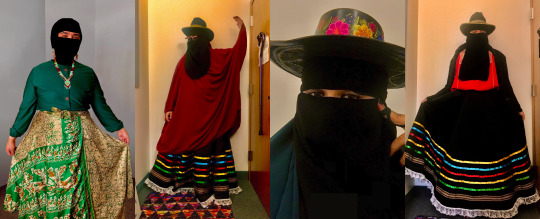
[Img id: 4 photos of the-eldritch-it-gay. In the first image, they are wearing a forest green button up shirt, a green and gold intricate patterned silk skirt, and a red, gold, and turquoise indigenous beadwork necklace and matching earrings. In the next they are wearing a embroidered Mexican cowboy hat, and a red jilbab over a full skirt with rows of ribbons going up half the skirt and white lace on the hem. In the 3rd image it is a close up selfie of them wearing a dark teal jilbab with a black niqab and a black leather cowboy hat painted with flowers. In the final image, they are wearing the same ribboned skirt from before, now with a bright red huipil, a black cardigan, an embroidered cowboy hat, and a black scarf split into two braids.]
I like black, though. And I’ve also talked on this blog a lot about how whether people see me as oppressed or treat me as a person is dependent on whether I look “cute” or wear bright colors. If you want to support muslimahs, your support needs to extend to those of us who wear all black, not just those who exist in your comfort zone.
Q: Isn’t it understandable for someone to be frightened at first? Almost anyone would think you look scary!
A: Here’s the thing, though, that fear response is not universal. I have plenty of friends who aren’t Muslim and who barely know anything about Islam, but their response to a photo like this

[Img id: a photo of the-eldritch-it-gay. They are wearing a black jilbab and skirt, white and rose gold headphones, and black and white shoes. They are facing away from the camera and walking down a dimly lit hallway.]
is not fear. To plenty of people, this looks like a normal photo of just someone listening to music and walking down a hallway. I’m not going to hold it against someone if they are so conditioned and unaware of Muslims that they’re frightened the first moment they see me. But if you are frightened, you should take some time to reflect on your biases and try to unlearn the association with niqab = scary. And most importantly, if you are frightened at first glance, you should avoid publically defending being frightened or telling me about it. Because at the end of the day, a lot of that reaction is based in islamaphobia and defending being frightened is also defending Islamaphobic people who use that fear to justify treating me as subhuman or trying to eradicate Muslims. I don’t blame someone for being brought up in a deeply islamaphobic culture, but I do expect that they reflect on their biases and work on unlearning them.
2K notes
·
View notes
Text
There's a world of difference between using imagery from the patriarchal and hegemonic institution that was used as the basis of your own oppression/religious trauma and mocking religions that are simply not that.
A sexy hijab/niqab/burka would be quite insensitive coming from an American or European Christian, as they are from a culture where such clothing is heavily stigmatized and opens you up to being hatecrimed. Not to mention it's not their own culture to play with. It'd be a completely different story coming from an ex-muslim that lived in or emigrated from somewhere like Saudi Arabia or Iran. Context matters, people.


lol i wonder why she stopped being catholic they're so wholesome and accepting.
133 notes
·
View notes
Text
DISCLAIMER: im not from the SWANA (south/west asia and north africa) region myself, but i saw this thread by little66bird on twitter (link to archived version) that was quite informative regarding SWANA character designs and making sure they don’t come off as orientalist! so i wanted to share for anyone who might be interested (with their permission)
below is the information, copied verbatim from the tweets (some tweets left out for length):
“A thread about what makes the character look Oriental and what doesn’t for anyone who wants to make an swana oc or story!! It will focus on mixing of desi and arab culture and how to differentiate between them!!
The most thing that people confused with is the headwear please don’t mix desi with arab headwear I didn’t put all types of swana headwear I just put here the ones that people may get confused by them
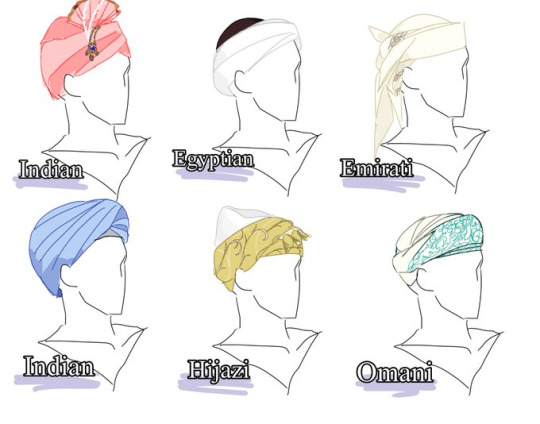
There is a lot of types of desi headwear and in general desi headwear are usually very colorful so please be careful Arab headwear aren’t that colorful. You can change some of arab color of headwear in your design but some of them you can’t change or else it will look like a different headwear
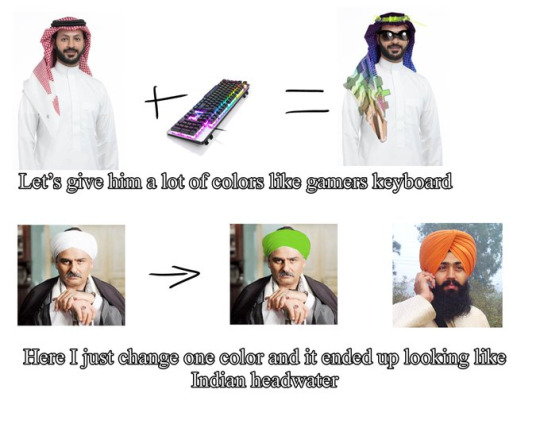
Also Jewelry and accessories can make the design look Oriental and we don’t want that please use references from real life don’t make inspiration from an inspiration just take references from real life
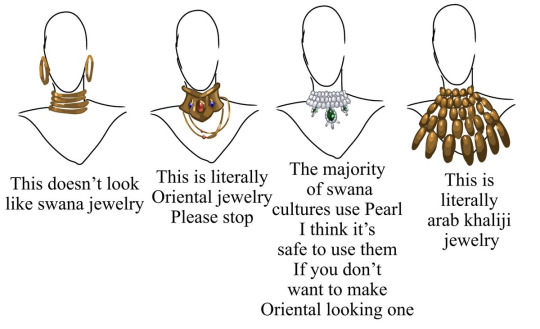
Speaking of jewelry please don’t give your Muslim oc golden jewelry because men aren’t allowed to wear them They can only wear silver jewelry but even tho they don’t wear anything more then rings and watches
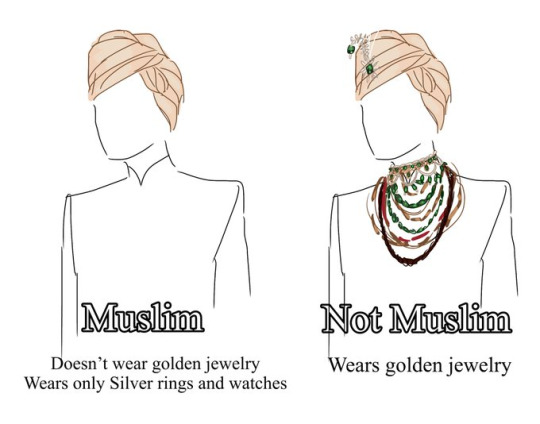
Also Muslims aren’t allowed to have tattoos some of us put fake ones Also not all Arabs are Muslims In the gulf area there is just Muslims arab so it will not make since to make a Kuwaiti Christian oc Instead make an Egyptian Christian oc or any ether county
Also Bedouin women and amazigh women and ether cultures used to have tattoos and usually people can’t tell the difference between arab Bedouin tattoos and amazigh tattoos Here this may help you with your Bedouin oc if you want to give them tattoos by @siinlayth: [LINK]
Also don’t forget henna it’s something that worth giving your swana oc
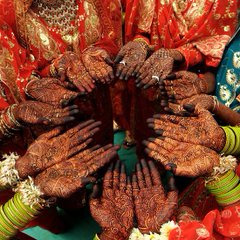
henna on the gulf is much simpler than other places and henna styles may different from place to another!!
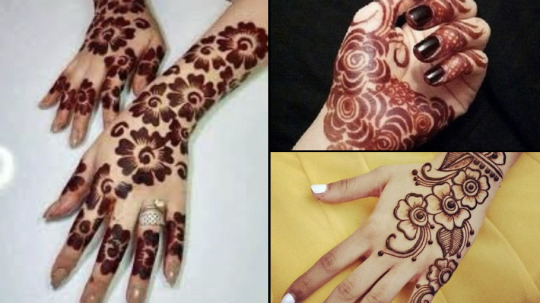
Styles of hijabs differences from place to place it will be so weird to give your oc an Arab hijab when the oc isn’t arab to begin with
Also if you oc from the gulf you can give them abaya since abaya is very popular there you can go crazy with the designs
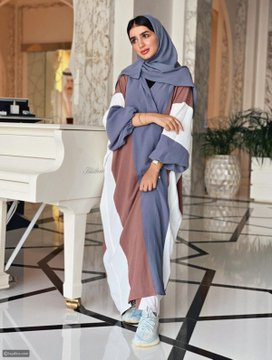
If you want to give your oc a veil make sure they are covering their entire body!!
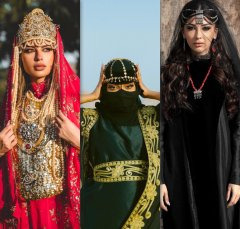
Also I forgot to include men who cover themselves it’s usually because they feel like it or because they are goofy as fuck these type of people like to do pranks I think it’s because when you cover your face you feel more Confident same thing with women who cover themselves
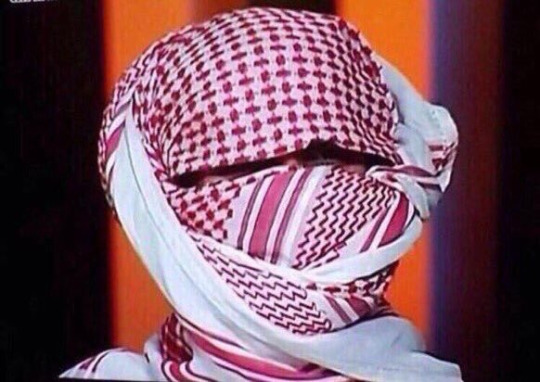
Did you know that Muslim women who wear the niqab like Batman because he’s best Representation for Muslim women they can relate to him because we bother wear the same thing I don’t know how to explain it but when you wear the niqab you feel like your Batman
Why do I keep forgetting things yah also this please know the difference between swana clothes they aren’t the same

Also there is a lot of styles for the shemagh and please draw it like the way it looks like don’t make it look like a mushroom. For those who don’t understand Arabic this pictures Are for Passport Officers they show the styles that you can used for your photo for the job”
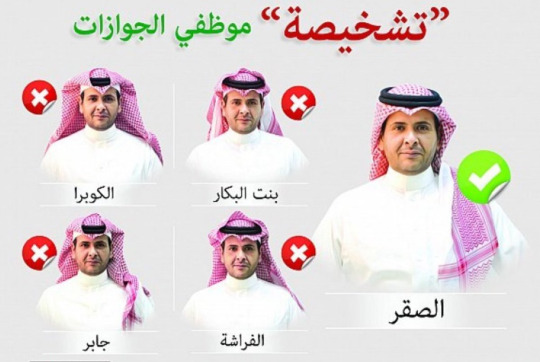
----------
edit (11 sep 2023): added link to archived version of the twitter thread; replaced henna image to be a screenshot of several images
59 notes
·
View notes
Text
Non Muslims dni please
(the word hijab will be used here as a term to refer to all forms of Islamic covering so that also includes the niqab and burkah)
It's frustrating having conversations about the hijab, hijabis get split into two groups of "wants to wear it" and "doesn't want to wear it" with some forced to wear it and some not, and that's it no one seems to explore any variants of experience, and the reasons why some wear the hijab and some don't, I will be going on a personal rant here.
The idea that hijabis who aren't forced to wear hijab and don't have strong familial pressure to wear it but still do, are doing it for modesty isn't really true, there is a difference between wanting to be modest and not feeling comfortable showing skin, they aren't the same, for some us it stems from sexualization especially from childhood, (in my case it was a mix of sexualization and trying to free myself from beauty standards, the idea that I had was that "oh if I cover up I won't have to worry about my appearance"), but anyways what am trying say is that we really need more discussions around the hijab from different experiences.
If there is a conversation that I am dying to have is around the hijab and Egyptian culture, really just the "westernization" of the hijab to keep hijab as a relevant thing due to its importance in Islam, but also the way it changed to appeal to Western ideals of professionalism, and the very clear classism the surrounds it and traditional Egyptian clothing. Basically it is a big can of worms that I am not smart enough to talk about.
8 notes
·
View notes
Text
honestly like from being a muslimah living in the middle east it’s. a little weird seeing different styles of hijabs being so distinctly classified on that one post here. like sure if you want to be formal about it? but honestly the meanings behind hijab and just veiling in general is a little more important than knowing what the difference between a lone hijab and wearing a cap under it is, imo
personally i dont see a huge problem w people referring to most muslim veils as hijab (like no one i know says shayla or w/e its just hijab or khimar) usually my issue is not identifying niqab correctly. this is not to say its not a valid thing to be annoyed by but seeing folks who arent muslim get worked up about knowing the difference between scarf styles is like...okay? id much rather see people learn about what hijab actually means than use flashcards to identify styles
#i didnt want to go deeper about how we classify hijabs locally because it felt like it was going to detract from the point of this post#but like yeah. a shayla is going to be called a hijab depending on what country you're in#a hijab is going to be called a shayla depending on what kind of country you're in#it IS HOWEVER important to know the difference between a hijab and a niqab and a burqa
700 notes
·
View notes
Text
Hey! As a Muslim and a hijabi, I'm gonna explain why the hunie pop game is Islamophobic and why Mark should stop or even delete/remove the play through videos. I've done this on twitter but they're not pretty specific so here we go. BTW this is the link to my tweet about it
https://twitter.com/eef_iplier/status/1362316236588085256?s=19
As you know, Abia, a Muslim character in the game.

These are the reasons why her character is problematic:
Her persona, a lot of non-Muslims always say that our religion oppressed women because our hijabs. Repressed is synonym of oppressed. It's a main stereotype that Islamophobe always uses to attack or give hates to Muslims. Fyi, it's the person's choice to wear hijab or not, people can't force her to wear it. Most hijabis choose to wear hijabs not because they have to but hijabs are making them feel comfortable and safe. Hijab means cover, covering us from the people who wanted to sexualize us. Most hijabis wear hijab to prevent themselves getting sexualized not the opposite. The game satisfies those who has hijab as fetish, fetishzing hijabis are really really fucked up and disrespectful. It defeats the whole purpose on why most hijabis wear hijab. Yes, I know the religion tells Muslim women to wear hijab but in no way they are forced to wear it, it's their choice, people can't force them to wear one, but instead giving them the time to wear it. No one should or can force people to wear hijab. It's their choice. The religion doesn't tell people to force those who are not ready or doesn't want to wear it. This counts as stereotype because in a lot of shows, Muslim women are "oppressed" and will get freedom when they take off their hijab which is really messed up. Wearing hijab doesn't press us at all. Again. It's making us feel comfortable.
Try to connect us with terrorism. Why? Because the streotypes thaf already have been put in the game and her job as airport security which makes it related to 9/11 tragedy where a lot of people started to hate Muslims because they think that Muslims do that. Like, all of them. Most people even think that all Muslims are terrorists because of several events that not even Muslims do. Our religion doesn't allow violence. We only can fight back if our lives' are threatened. Also, one of her outfit which is 'Assasin' (Yes, that's the name of the outfit is Niqab which is this one
Naming it as assassin is more likely to associate her to terrorism. Just like hijab, niqab has its own purpose, covering face, hair, and their body. And also, no, no one's getting forced or pressed to wear it. It's their choice. Hijabis aren't oppressed for wearing niqab. burqa, and hijab. No. One. But again, these stereotypes that mostly white people assumed about us portrayed us badly. These streotypes are bad representation of Muslims. Beside, putting hijabis in porn game already a bad idea itself and also disrespecting. Hijabis are getting harmed and violated on public just because their hijabs and now people are fetishizing us. Hijab is and will never turning as fetish. And people who has it, need to realize fetishizing hijabis are disrespectful for not respecting the purpose of why most hijabis are wearing hijabs. Making it more normalized. I know the game is just again game, but some people or even most of them are taking them seriously and started to turn hijab as fetish. Playing the game makes you pay the devs who are making the game with messed up streotypes that have been hurting and violating Muslims. They're profitting money of the offensive and problematic game.
The more people play it, more people normalized the streotypes, more Muslims get hurt and violated because the streotypes.
To summarize:
The reason why Mark should stop continuing the series or even taking down the hp play through videos because he's promoting the game to his channel and making a lot of people who can't afford the game, enjoying the fetishization of Muslim. Also, normalizing these streotypes. It's also making most Muslims in his community feel uncomfortable. We can't ignore the videos if everytime we go to his channel, those videos will pop up. Not only that, some of his videos will get suggested too. Beside, we can't ignore islamophobia.
The playthrough videos of the game:
1. Making Muslims uncomfortable and we can't ignore it because every time we go to his channel those videos will pop up and also we'll get suggested of those videos
2. Normalizing the shitty stereotypes of Muslims
3. Making some people who can't afford the game is enjoying the fetishization of hijabis
4. Promoting the game, and making the devs who made the game with the shitty stereotypes and put a hijabi there to satisfy people who has hijab as fetish (Because it's a porn game about fetishes), getting profit from the game (Again, The more people play it, more people normalized the streotypes, more Muslims get hurt and violated because the streotypes)
That's all from me so I do hope Mark discontinue the game and even take down the other videos about it. Thank you for reading this, I hope all of you get educated on why this game is problematic and why Mark should stop discontinuing the playthrough. I'm sorry for ruining your enjoyment of the play through but this is harmful.
Also, no, I'm not cancelling Mark over this. I don't cancel the devs, but only dont want them to get profits off that one specific game. Although, they've made several racists jokes which makes them racists too but, I'm more focusing on the game.
I'm not cancelling Mark. I'm criticizing and suggesting him. I'm not the only one that suggest him to do this but a lot of other people too.
Please find the differences between criticizing/suggesting/holding someone accountable with hating/cancelling. They are huge differences.
Another note: we're not gonna forcing him or bashing on him for keep continuing the series but we only continue to criticize and suggest. Not cancel.
Edit: I'm sorry that some of my words might be not making sense, English isn't my first language and it almost 9 pm and I'm sleepy djnendn

578 notes
·
View notes